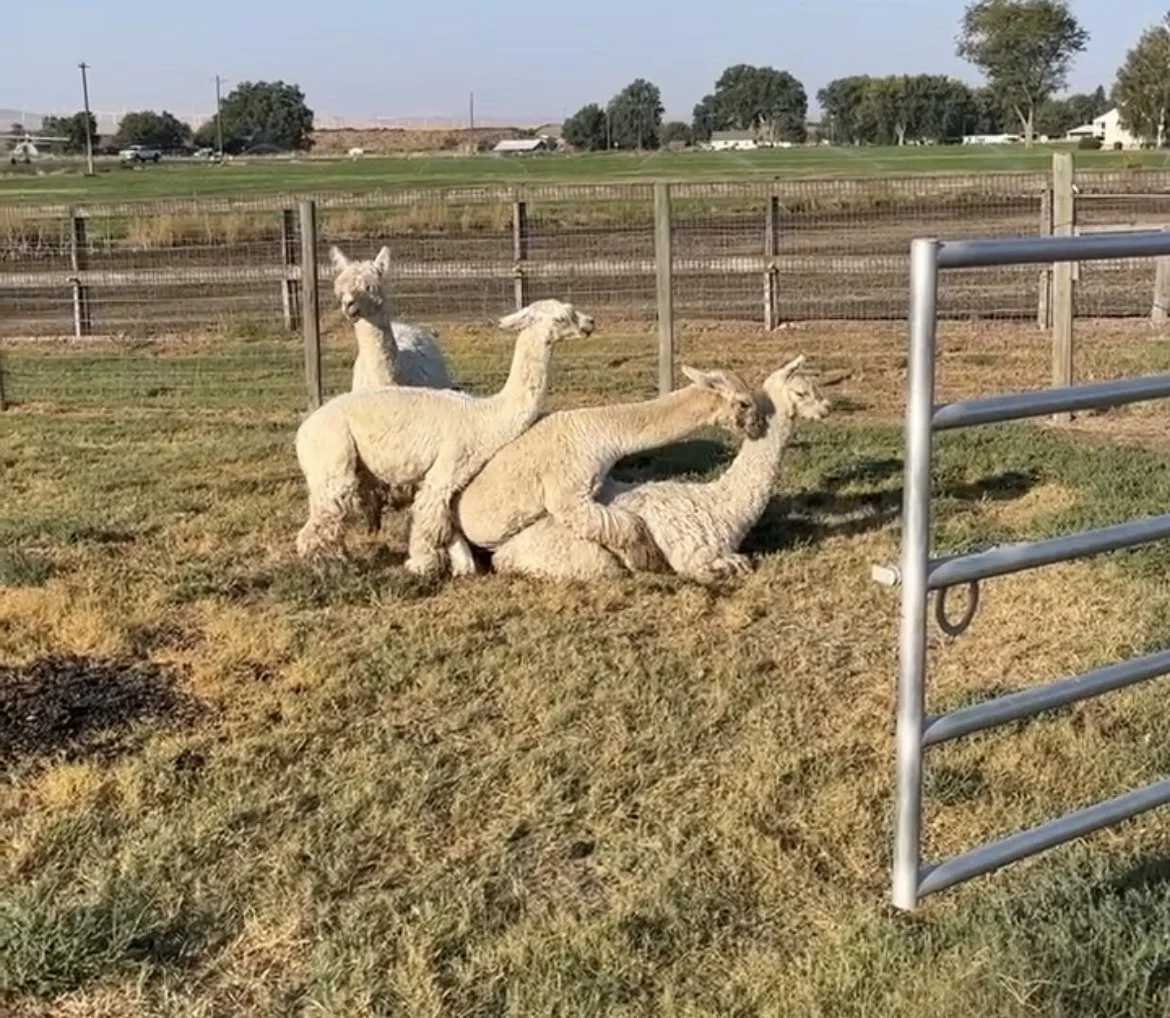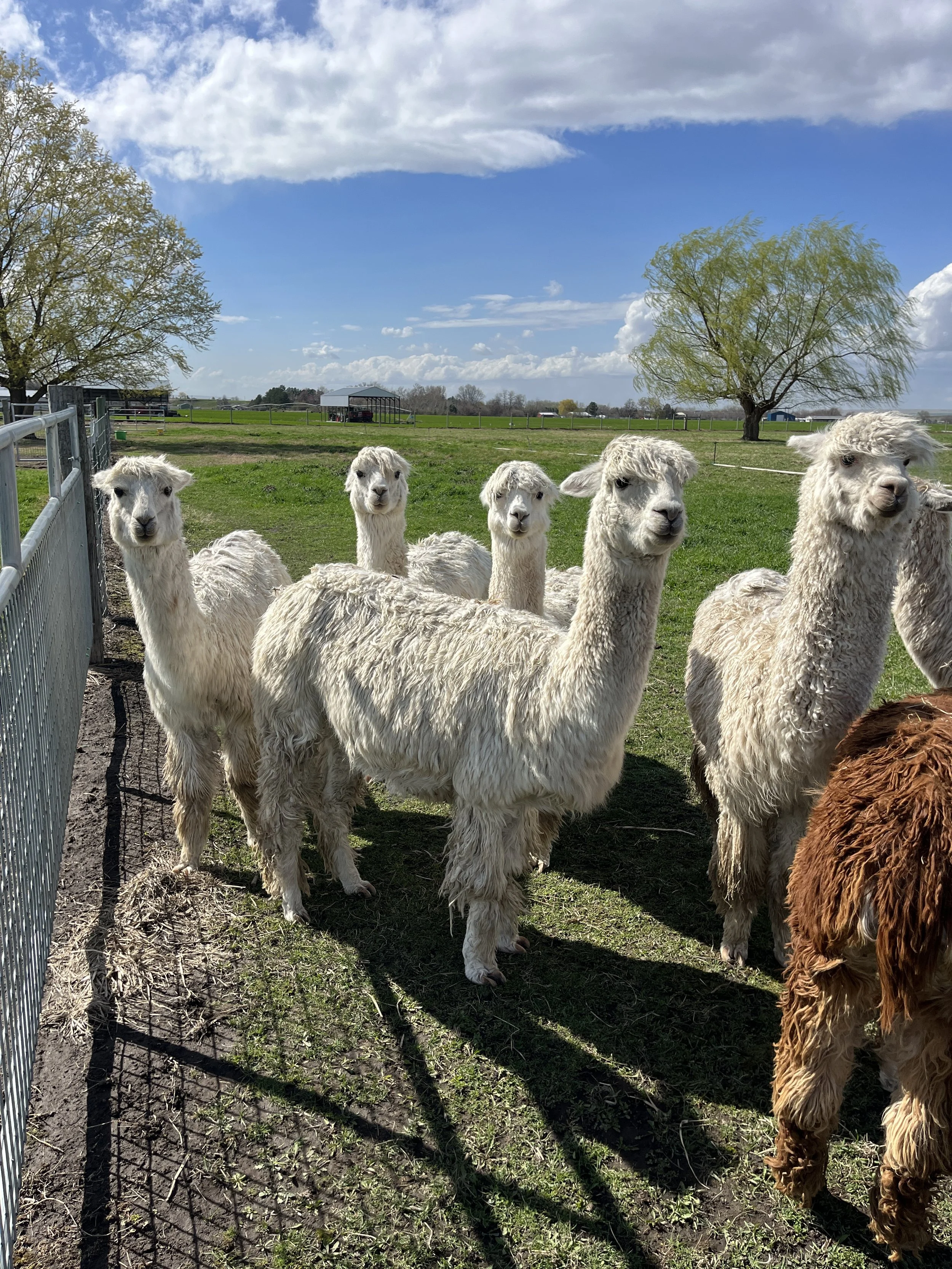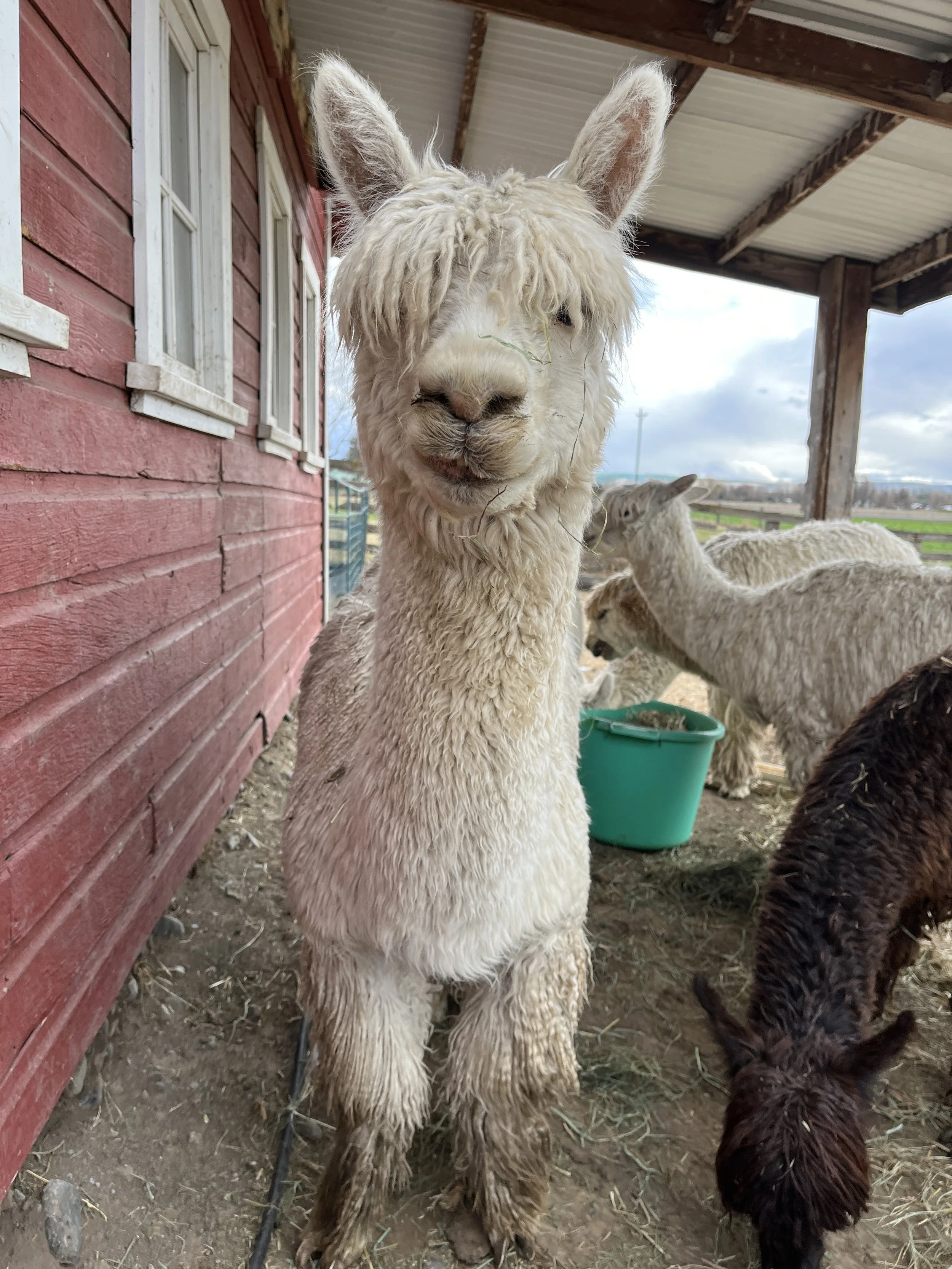Baby Watch 2023
If cows calve… and sheep lamb…Then, alpacas unpack.
Haha, I made that last part up! But it seems perfectly fitting & adorably accurate!
As we await the arrival of new cria (kree-ah) into our herd any day now, I thought I’d give you a little Unpacking 101.
Before I dive into the specifics, I gotta give a little back story first. Not only to give you a window into our excitement for the next crop of cria, but to share a little of our farming philosophy.
We currently breed every other year. As insanely hard as it was to forgo a full year having any sweet little ones pronking around the pastures, I do this for a number of reasons, and it all centers around sustainability…because that’s not just a buzz word around here…but rather a way of life.
Economic Sustainability. Alpacas can live up to 20 years, we must be mindful in what we produce. Therefore we aim to produce the amount fiber that we have a market demand for each year. With the cost of every input going up, including the specialized processing from raw fiber to a finished garment, cash flow is an ongoing challenge. Since it takes nearly 2 years to bring one fiber harvest to market, more is not always better.
Ecologic Sustainability. Fresh grass is the best forage. The longer they can graze on high quality grass, the better their health. Better health = less management = lower overall production costs. In order to maximize grazing without depleting our pastures, we rotationally graze. This approach means we are mindful of our stocking rates, more is not always better.
Personal Sustainability. Although there is a cultural perspective that farmers work from sun up to sun down, we know that mindset isn’t physically sustainable in the long term. There are definitely times when that kind of effort is required, but it’s the exception not the rule. We’re almost 10 years in and we know deliberate growth is the best, more is not always better.
Okay, with that said, I’m so excited that this is a baby year!!
Here are a couple basic facts to start out -
Morning arrivals - generally between 8am and noon.
I’m not certain why this is but I speculate it has something to do with their origins. Alpacas are natives to the high altitudes of the altiplano in South America.
My thinking is — it’s important to be born, dried off, and walking before it gets cold and dark. Or perhaps they are more dramatic than I give them credit for - and they just like to be as semi-specific as the cable guy?
Either way, their reliable promptness allows me to wrap up ‘baby watch’ by lunch time. A late evening or nighttime arrival usually spells trouble.
No assistance or assembly usually required.
My only concerted help is to separate impending moms-to-be in our makeshift maternity ward — a grassy, shady area cordoned off so I can monitor them right before, during & after delivery.
To be honest, this concept was borne out of convenience, as I’ve had to hunt the pastures in search of the placenta enough to realize it’s best to section them off in a smaller area.
In terms of actual delivery, they birth on their own. The front feet come first, followed by the head and neck, with the chest cavity being the largest dimension. Assistance is rare (knock on wood), and knowing when you’re truly needed is the greatest struggle of my shepherdess heart. It’s a skill that is earned over time, and usually by way of heartache and failure, unfortunately.
It’s quick! Unlike the long 11 month gestation, actual birthing happens fairly fast.
One time, I noticed a dam (mom) in position, by the time I ran to the barn to get the birth kit & came back, the cria was already on the ground! That’s what I call a perfect unpack!
When I’m able to view the entire process, from the first showing to hitting the ground, it’s typically 20 minutes or less. And it’s not just the delivery that’s fast, all of the major after-birth functions happen quickly as well. The cria is upright and sitting within 15 minutes, attempting to stand and walking within 30, and had it’s first drink & drunken stroll within the first full hour.
So you must be wondering — who is expecting?
First of course is the herd matriarch and reigning Alpaca of the Century, Birdie. She really is the definition of what it means to be a foundation female — her genetics and mothering instinct are the backbone of the herd we have today.
Birdie’s daughter, Riff Raff, is also expecting.
Riff Raff is more petite and compact than her mom, but she’s an equally easy birther and steady milker.
She’s an excellent mom.
Birdie might also become a great grandma this year, due to an ‘oopsie’ of mine.
This past fall when I was completing the final merge of weaned males into the big boy herd, Riff Raff’s Reba somehow got herself into the wrong herd — and I mistook her for her brother Ralf.
Well, let’s just say Rainier didn’t mistake her!
Since she looked a lot like Ralf, I thought Rainier was just reestablishing dominance and I didn’t think anything of it. Until I saw him doing it later the next day and that’s when I realized my mistake!
Although Reba was bred only twice and she’s a maiden (unproven female), there’s a good chance Rainier wasn’t successful. And if he was, I’ll be happy. He would’ve been the mate I selected anyway.
Next is Sugar who is expecting her last and final baby.
Last but not least, Hoosier also has one on the way.
She is Hammie’s mom and despite his birth (you can read about it here), I know she’s ready to be a full fledged mom this year (knock on wood with me!!)
So when do we expect the babies?
Well, any day now! They were all bred within days of each other so that we have a nice close grouping of playmates. Except for Reba, if she’s got one, it won’t arrive until August.
Here are all the mamas-to-be in one photo!
Who’s the daddy?
Our boy Legend! This is the first time we’ve used our own as breeding stock and I’m super eager to see what he produces!










